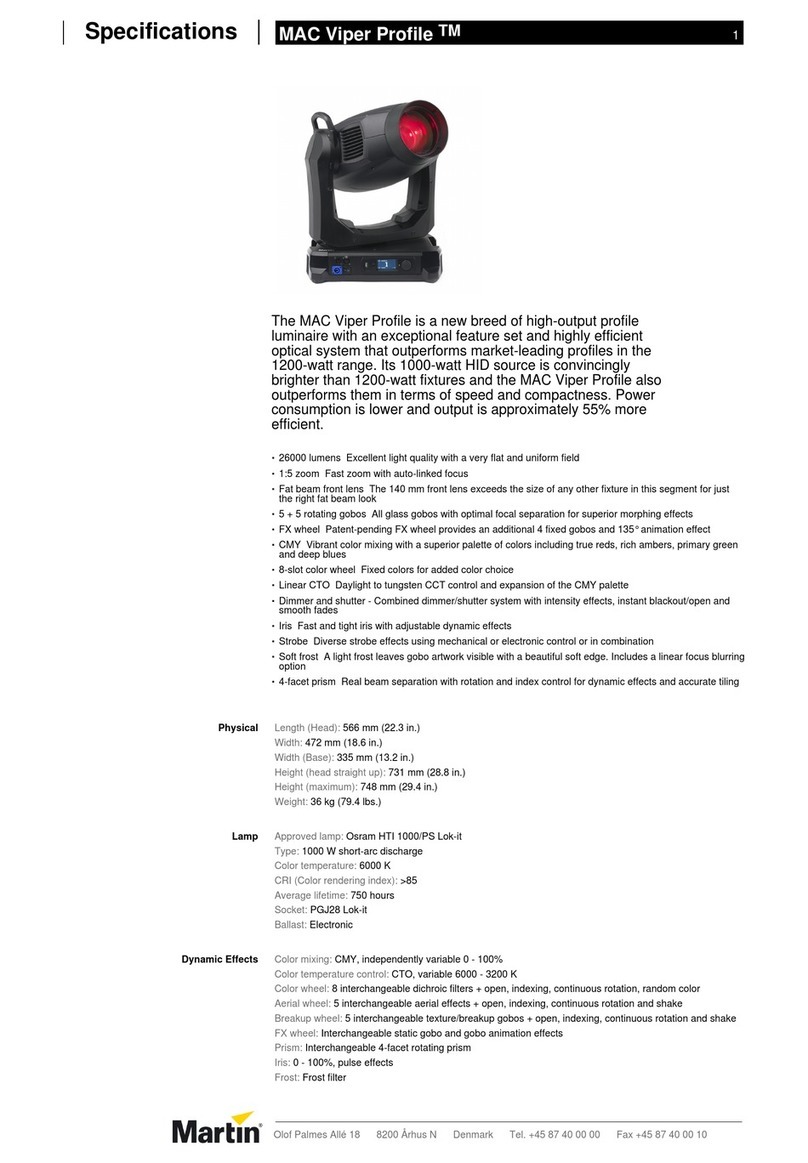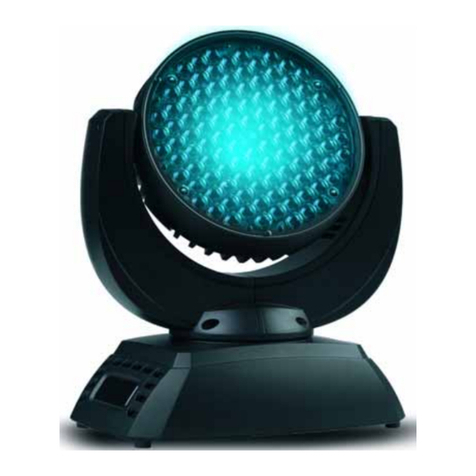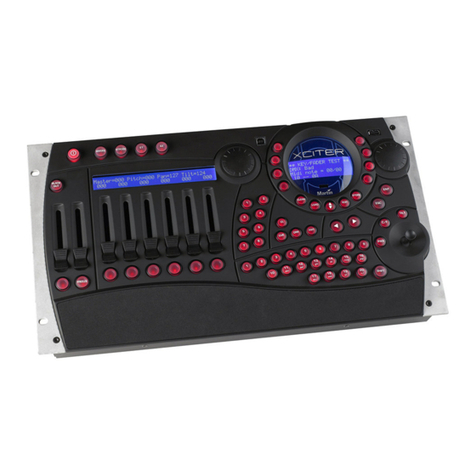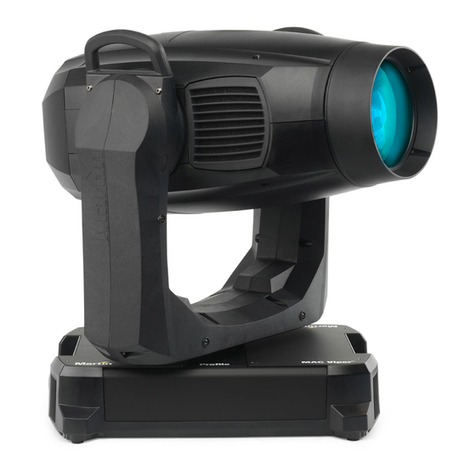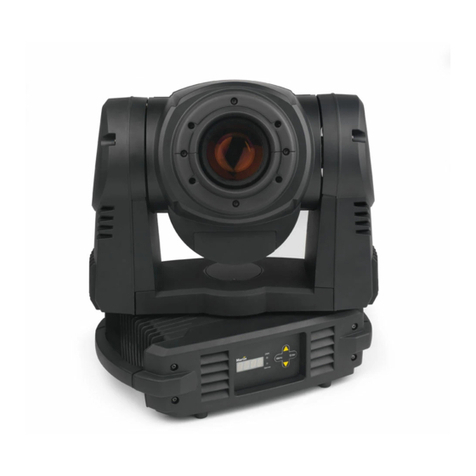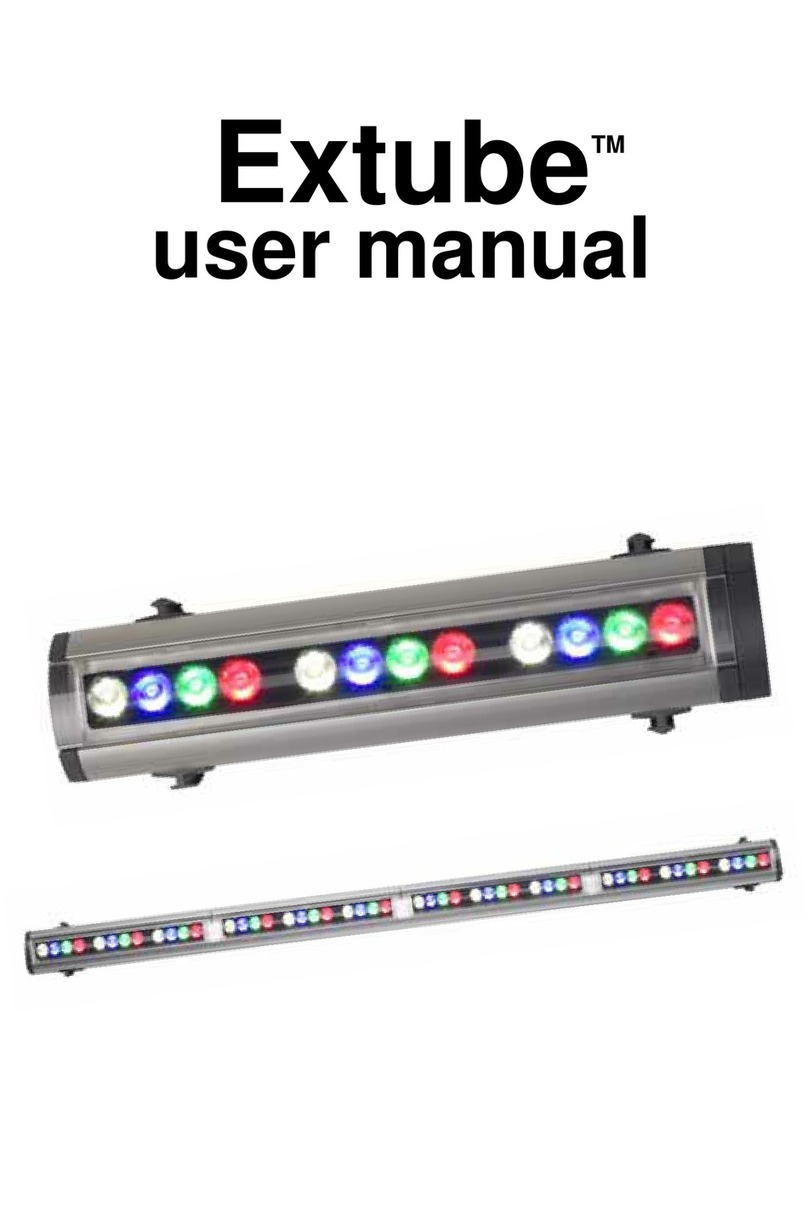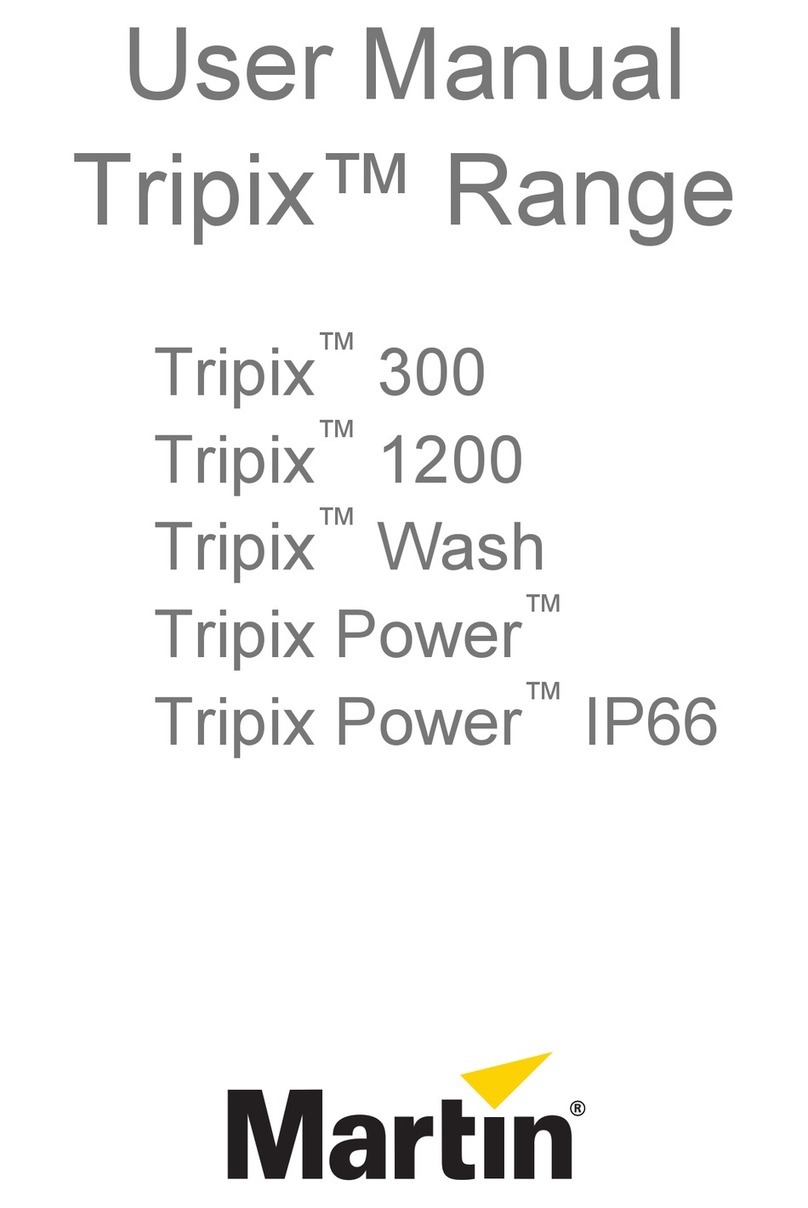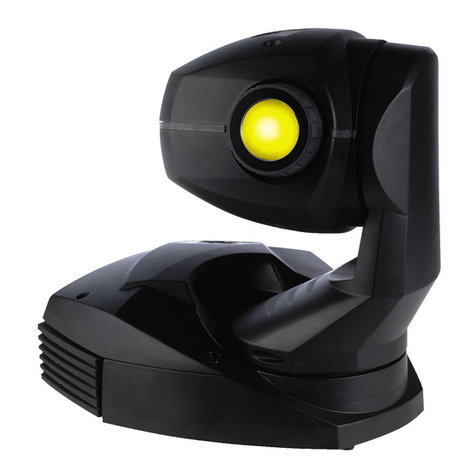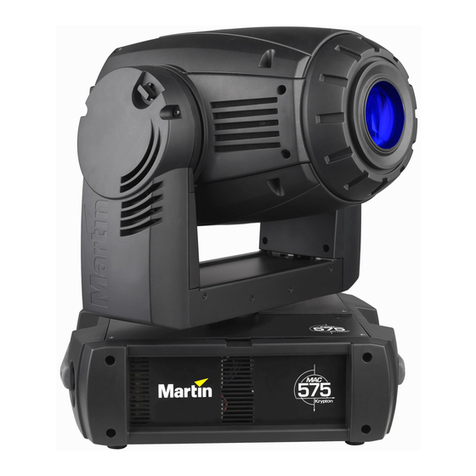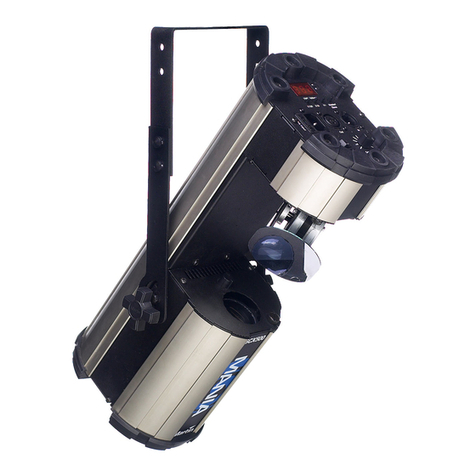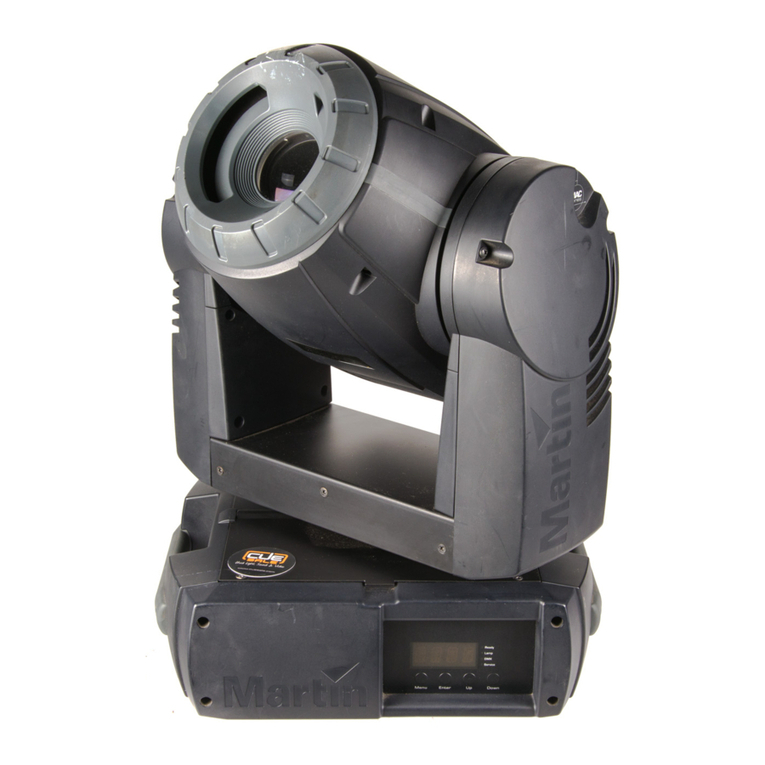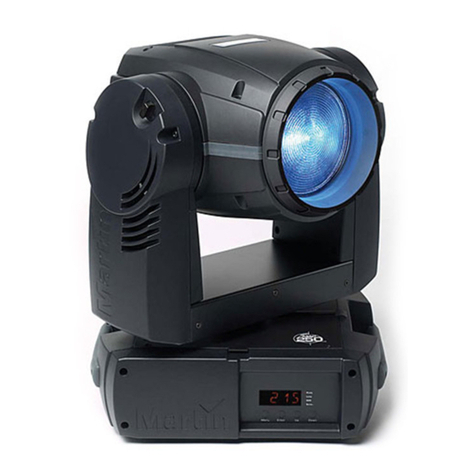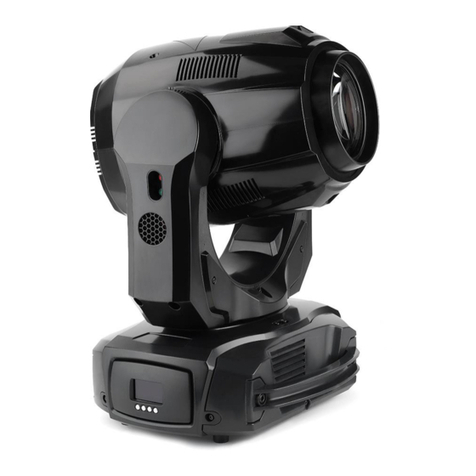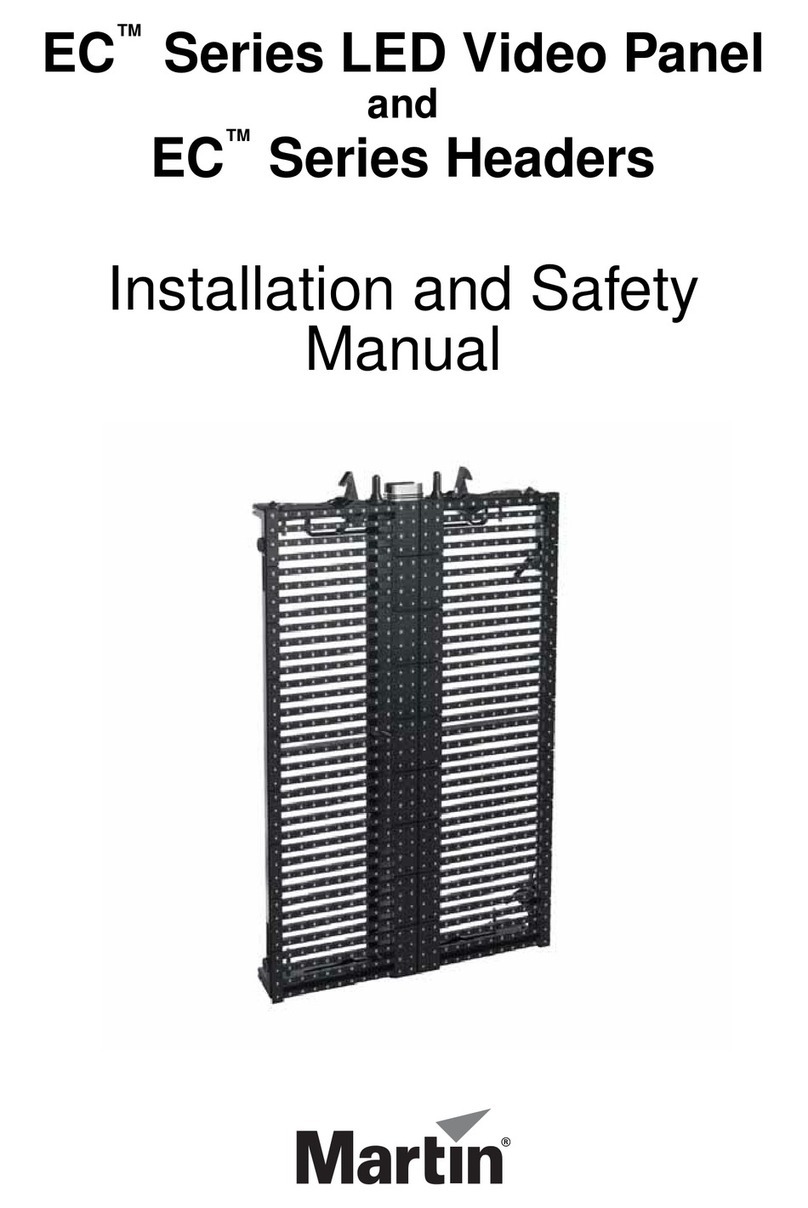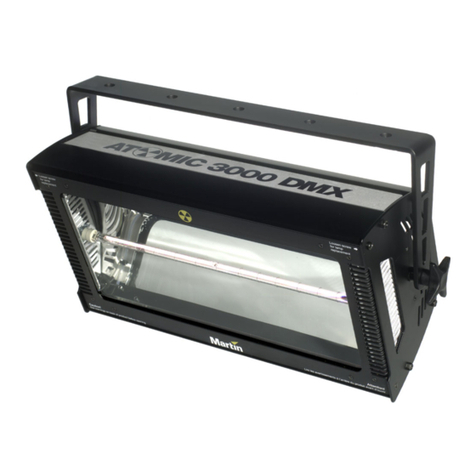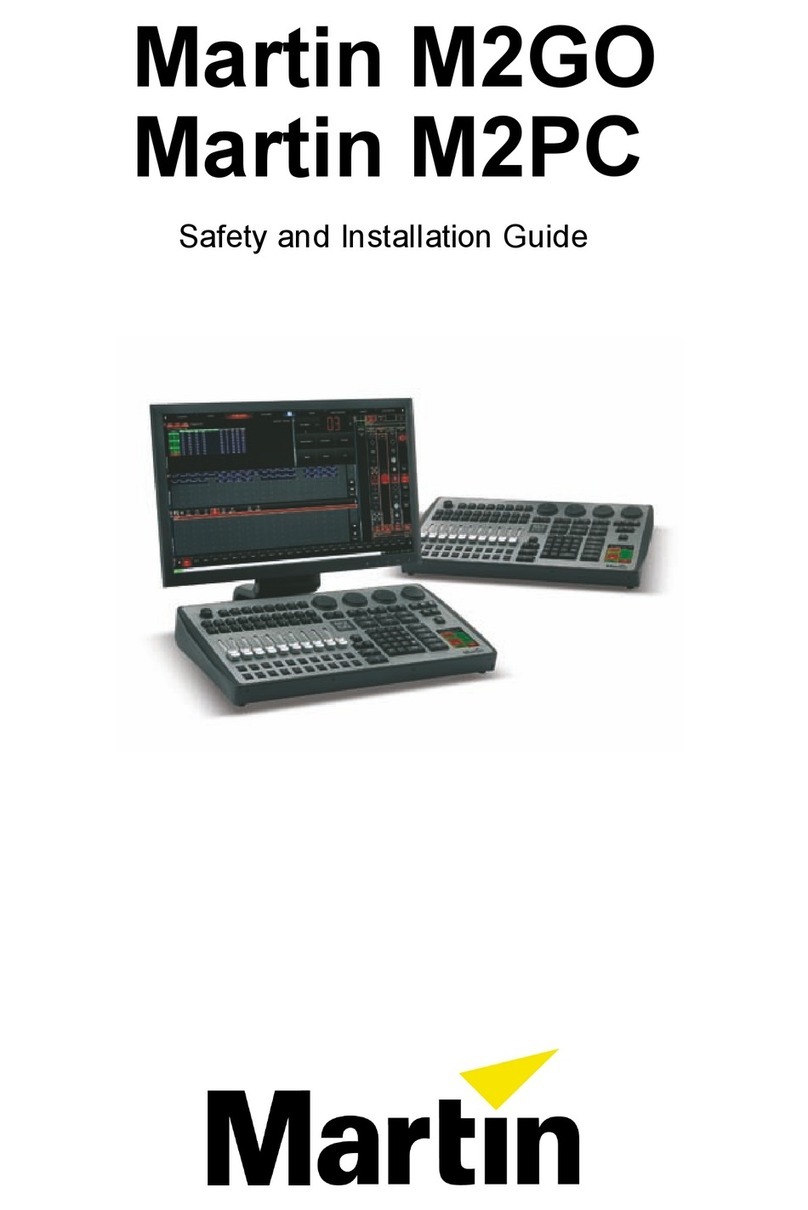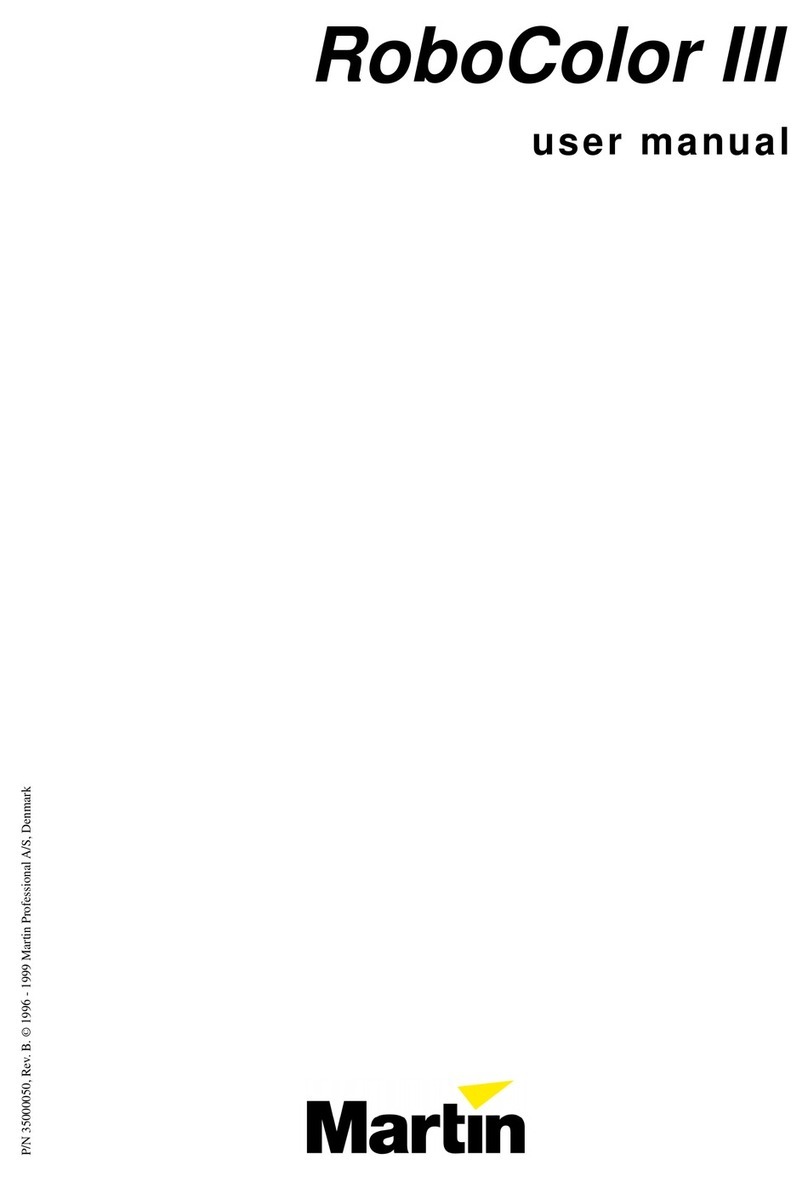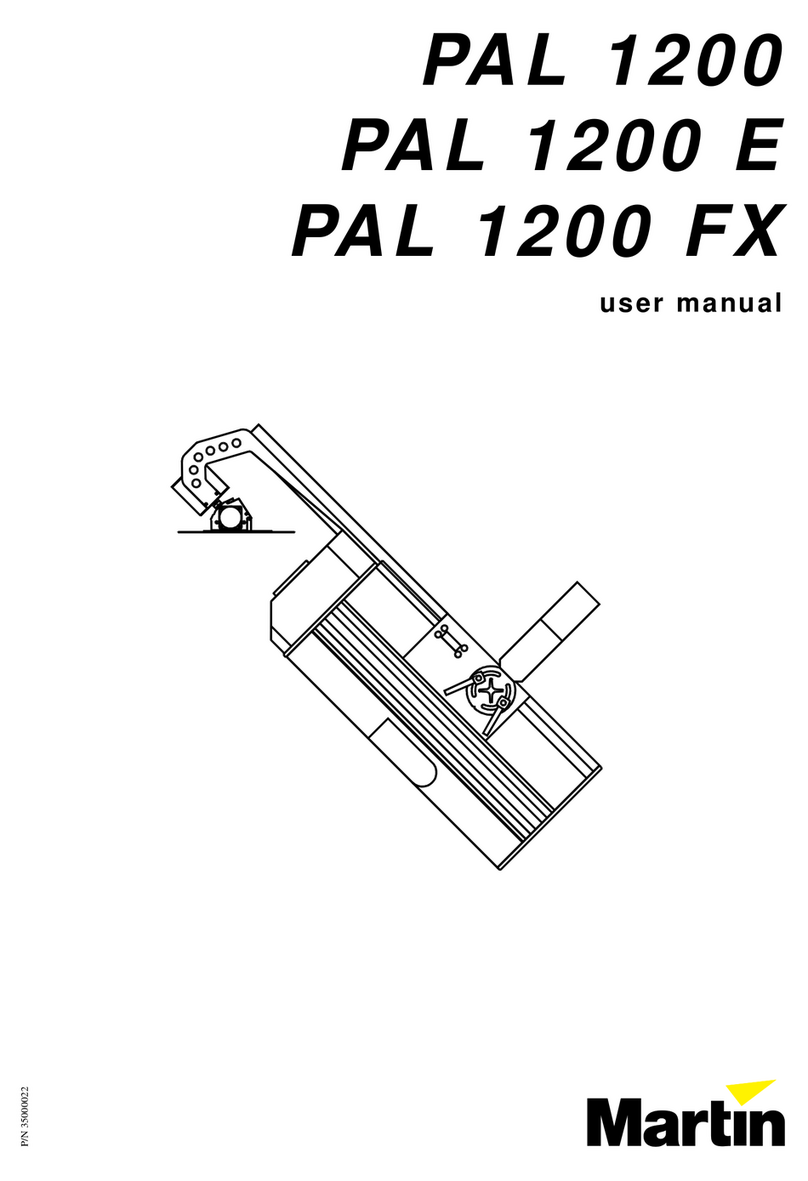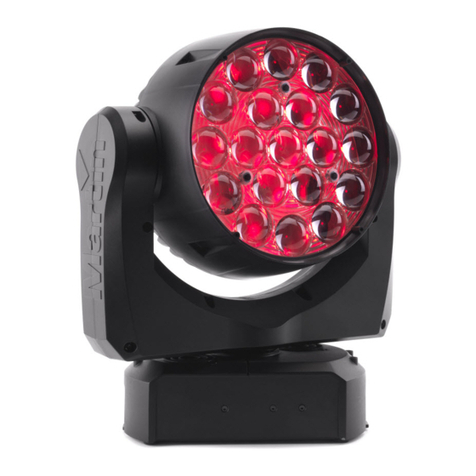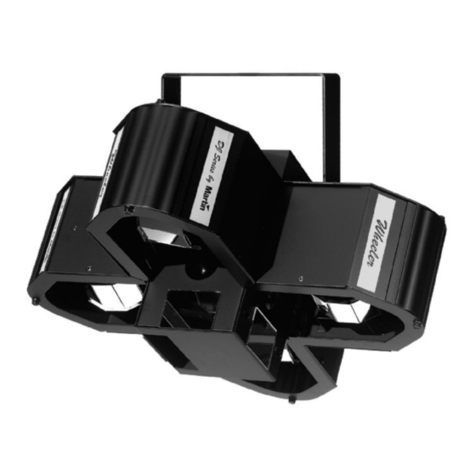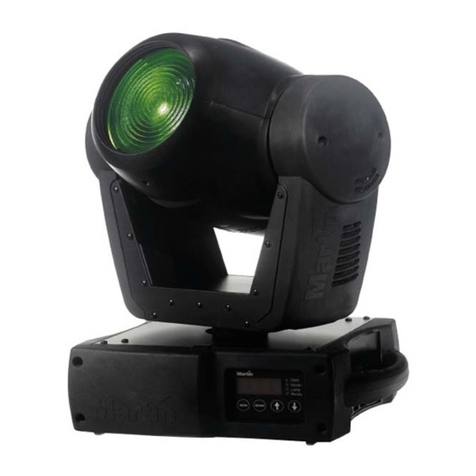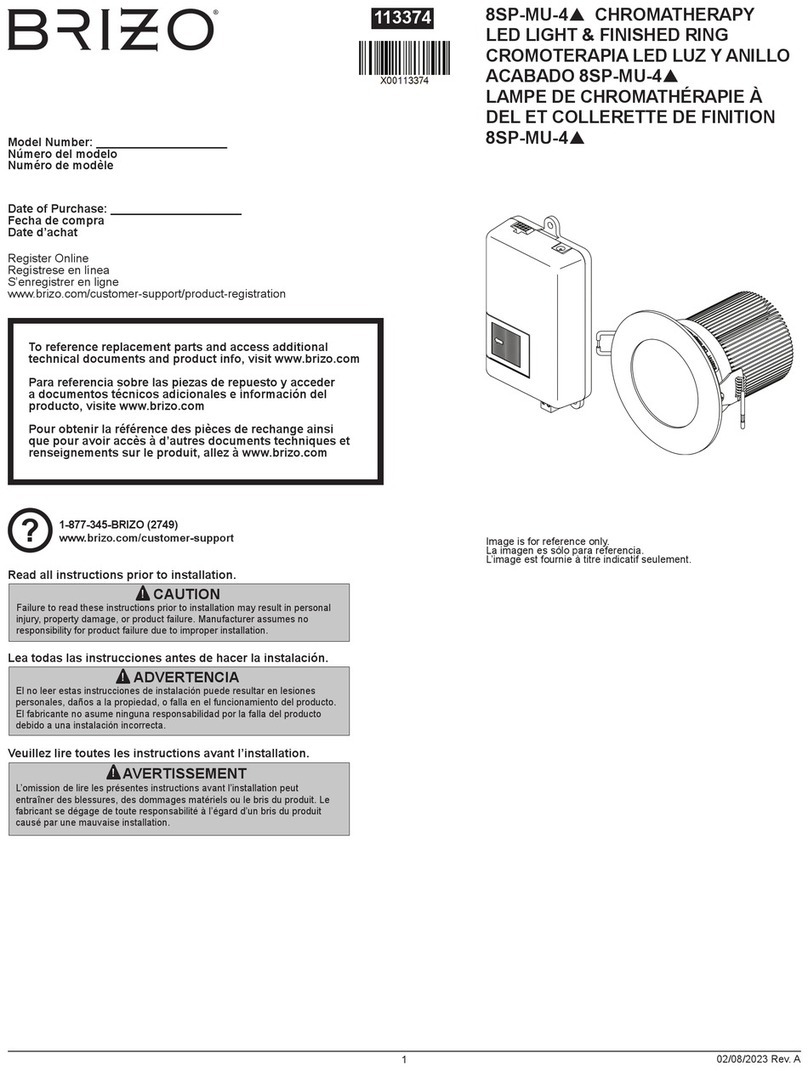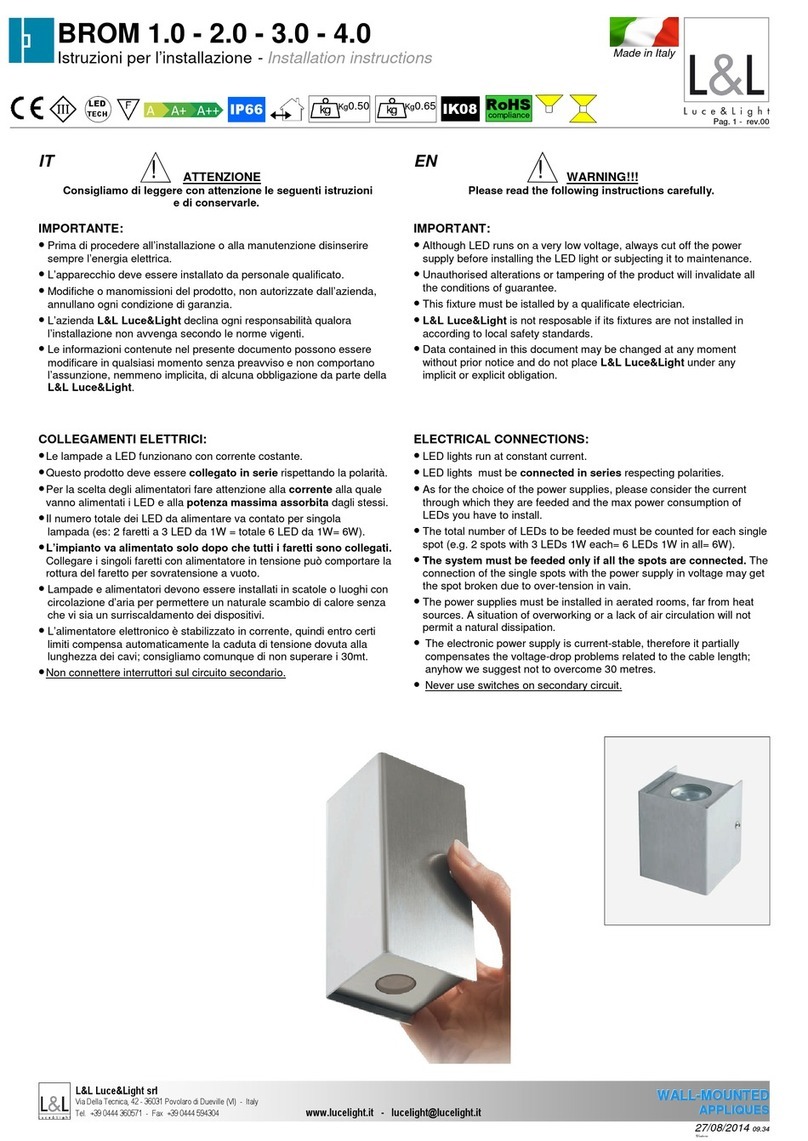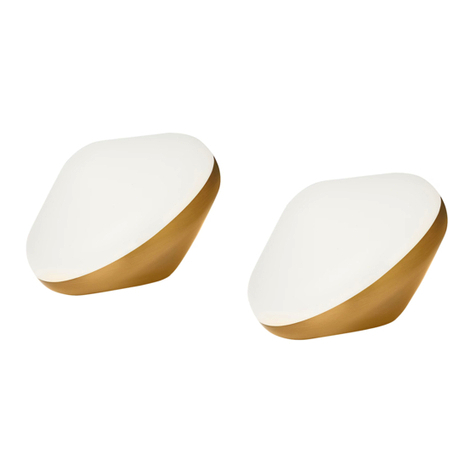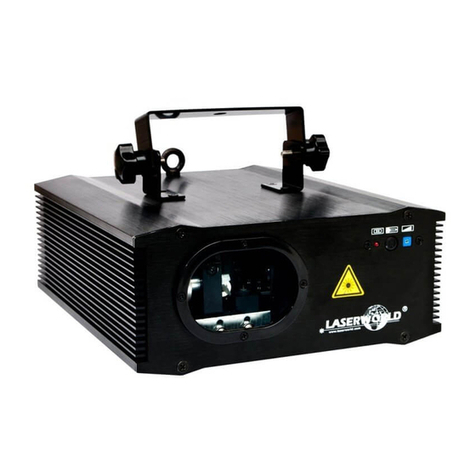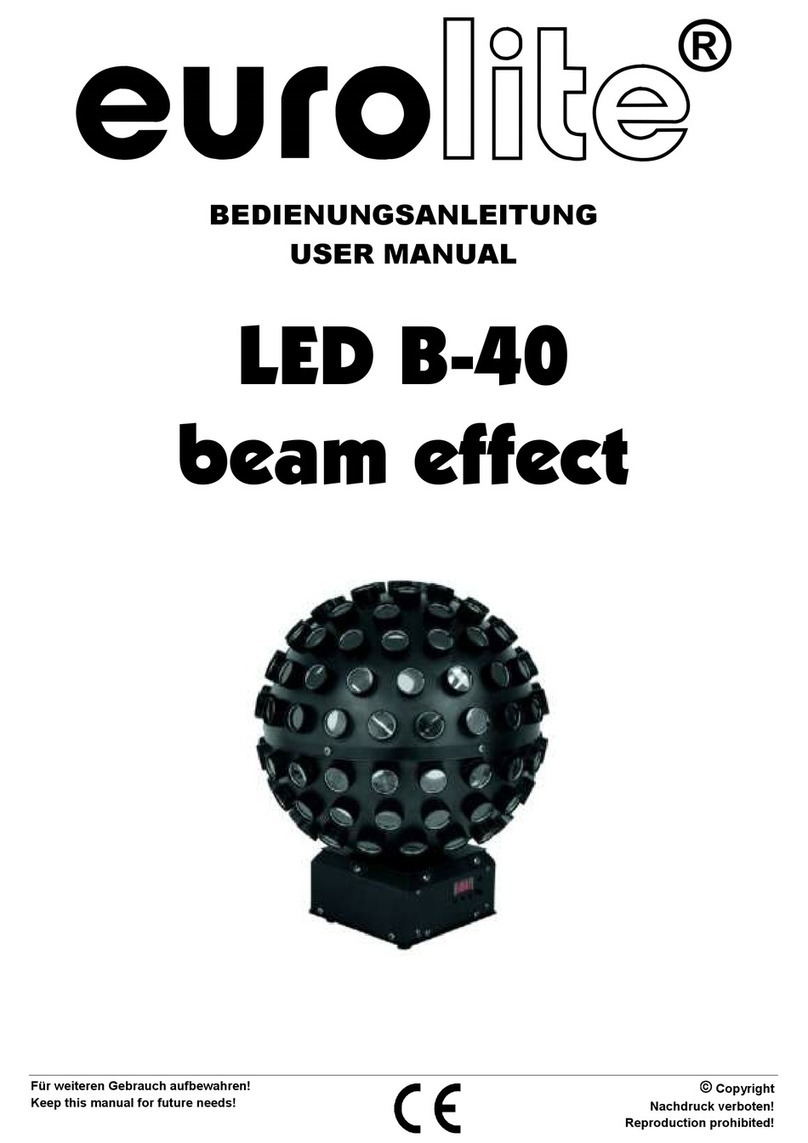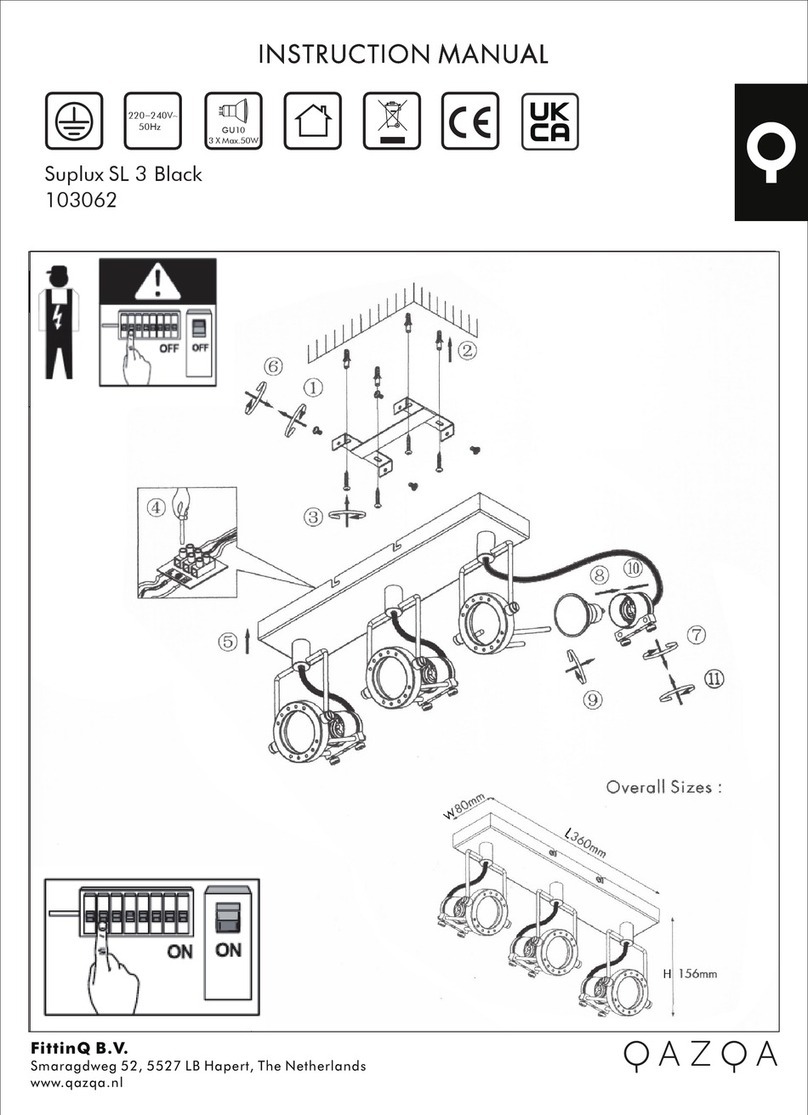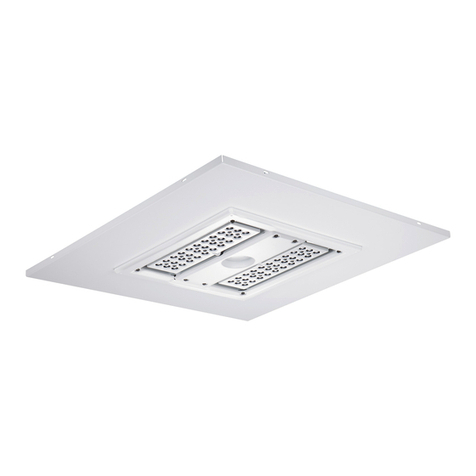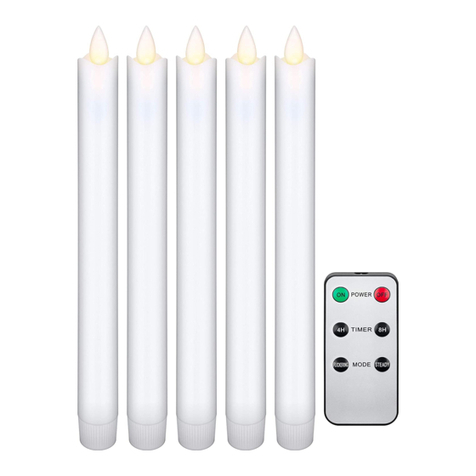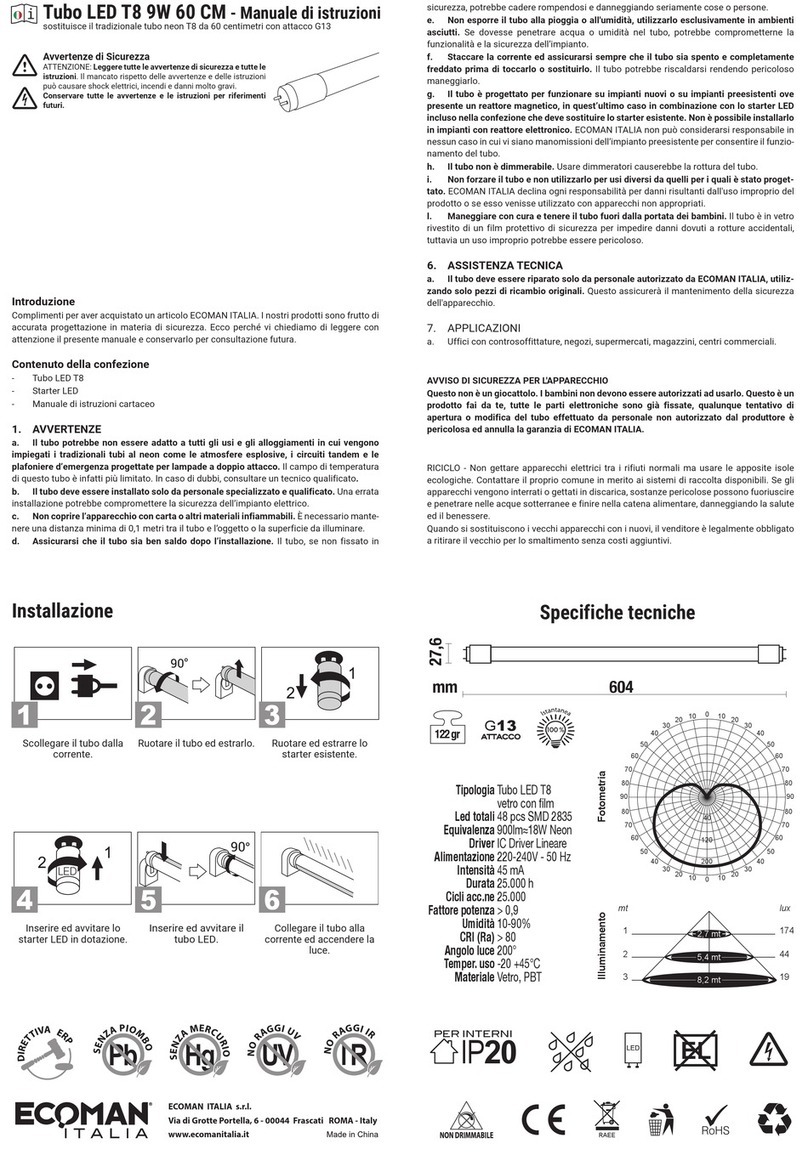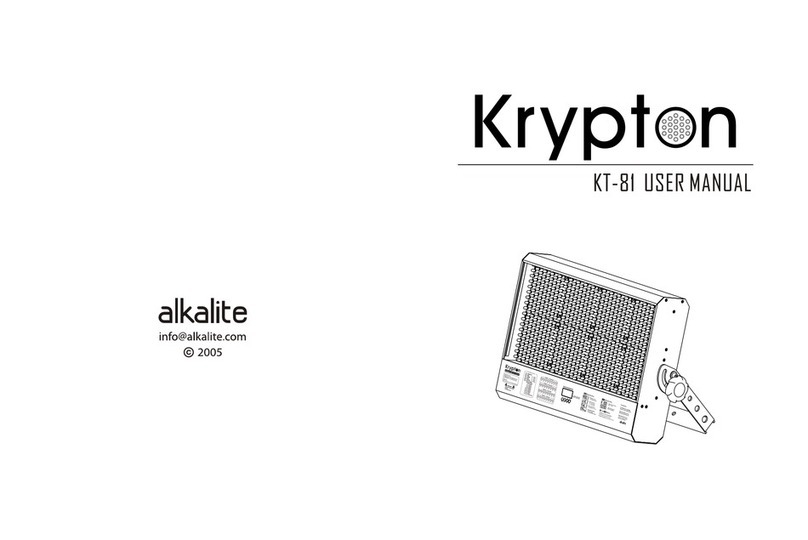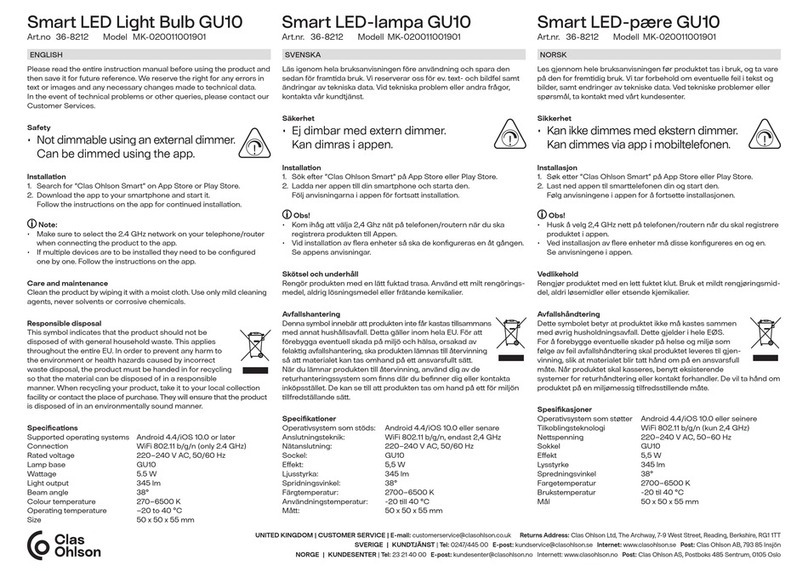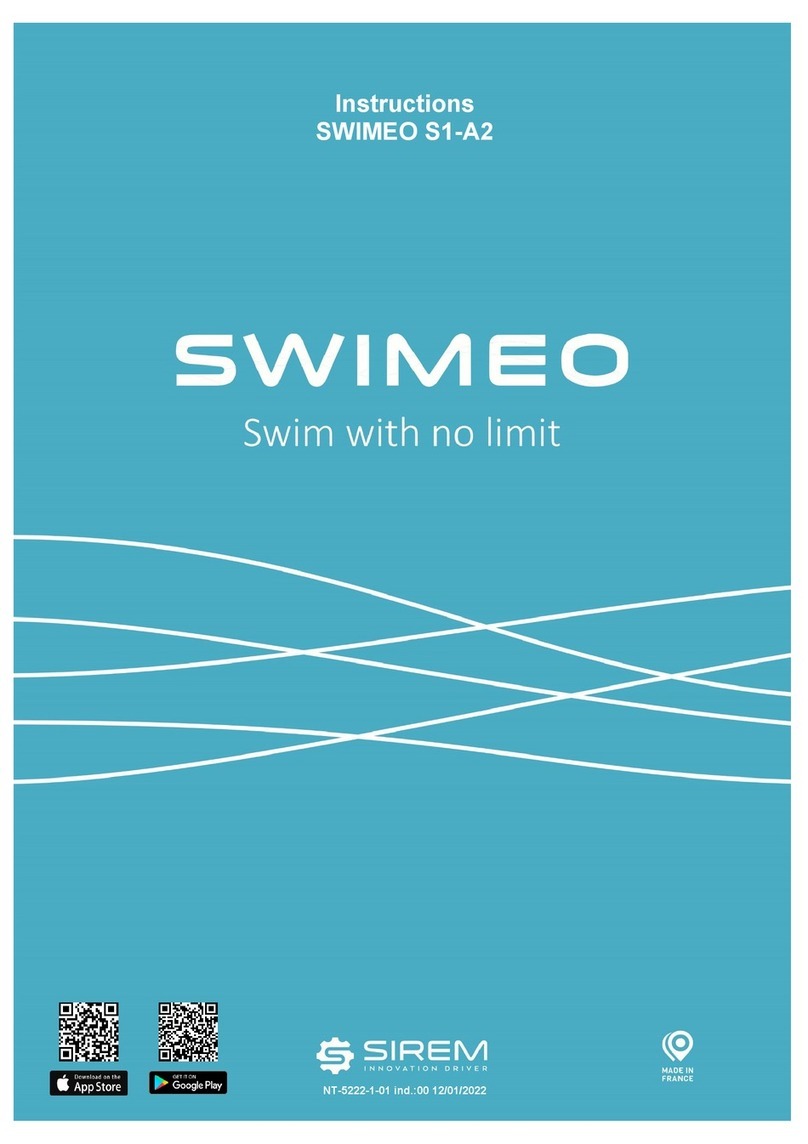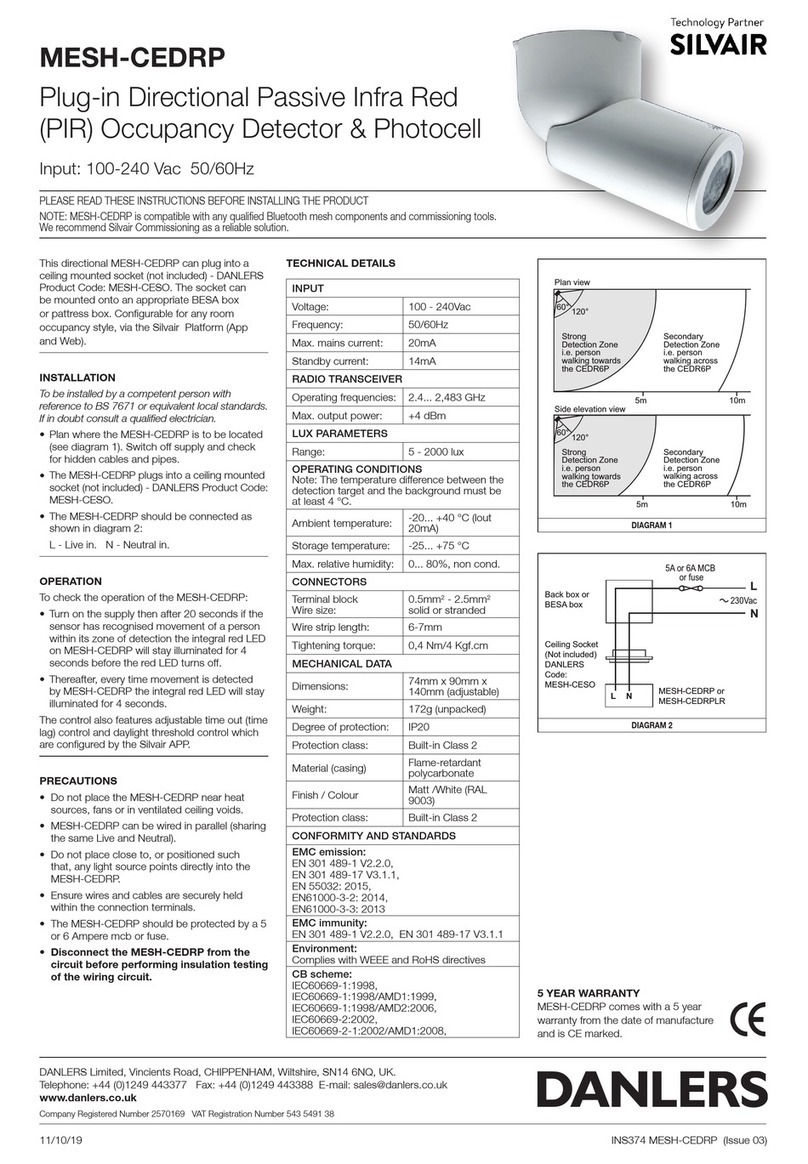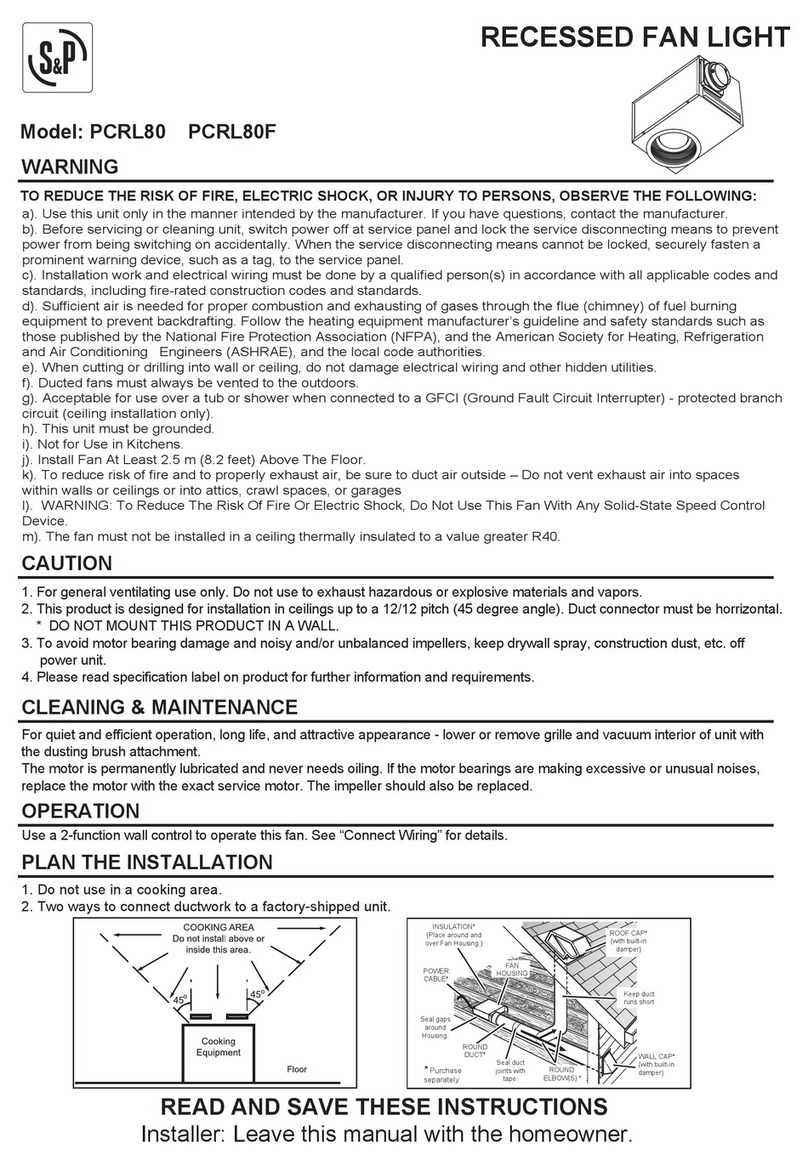4EvenLED user manual
• Before using the EvenLED, check that all power distribution equipment and cables are in perfect condition
and are rated for the current requirements of all connected devices.
• Isolate the EvenLED from power immediately if any cable, cover or other component is damaged,
cracked, wet or deformed. Do not reapply power until all damaged items have been repaired by a qualified
professional.
• Do not expose the panel to rain or moisture.
• Refer any service operation not described in this manual to an authorized Martin Service partner.
PROTECTION FROM BURNS AND FIRE
• The exterior of the EvenLED becomes hot, up to 80° C (176° F) during normal operation. Avoid contact by
persons and materials. Allow the EvenLED to cool for at least 20 minutes before handling.
• Install the EvenLED in a well-ventilated area only.
• Install the EvenLED in a vertical orientation the correct way up (i.e. with the arrow on the back of the panel
pointing up and the mounting T-hooks at the top of the frame as shown on the cover of this user manual)
only. Do not install horizontally or at any angle from the vertical.
• Provide a minimum clearance of 5 cm (2 inches) from adjacent surfaces and ensure unrestricted airflow
around the air vents in the rear panel.
• Do not illuminate surfaces less than 5 cm (2 inches) from the front surface of the EvenLED.
• Keep all combustible materials (e.g. fabric, wood, paper) at least 5 cm (2 inches) away from the EvenLED.
• Keep flammable materials well away from the EvenLED.
• Do not operate the EvenLED if the ambient temperature (Ta) exceeds 40° C (104° F).
• Do not modify the EvenLED in any way not described in this manual or install other than genuine Martin
parts. Do not stick filters, masks or other materials directly onto LEDs. Use only Martin-approved
accessories to mask or modify the light beam.
• Do not attempt to bypass thermal or current overload protection systems or fuses. Replace defective
fuses with ones of the specified type and rating only.
• If you relay power from one panel to another using POWER THROUGH sockets, do not connect more
than 9 panels in total to each other in an interconnected chain if AC mains power is 100 - 120 V, 50/60 Hz.
Do not connect more than 16 panels in total to each other in an interconnected chain if AC mains power is
200 - 240 V, 50/60 Hz.
• Connect only EvenLED panels to POWER THROUGH sockets. Do not connect any other type of device
to these sockets.
PROTECTION FROM INJURY
• Do not look at exposed LEDs from a distance of less than 40 cm (16 inches) from the front surface of the
panel without suitable protective eyewear. At less than this distance, the LED emission can cause eye
injury or irritation. At distances of 40 cm (16 inches) and above, or if the LED output is diffused so that it is
impossible to identify the individual LEDs, the LED emission is harmless to the naked eye.
• Do not look at LEDs with magnifiers or similar optical instruments that may concentrate the light output.
• Ensure that all external covers, components and installation fittings are securely fastened.
• Install the EvenLED panel suspended vertically the correct way up from a truss or other supporting
structure as described in this manual only. Do not mount, stand or stack on a surface.
• Do not suspend more than ten EvenLED panels fastened to each other in a vertical chain.
• Block access below the work area and work from a stable platform whenever installing, servicing or
moving an EvenLED panel.
• Use two clamps installed as described in this manual to suspend the EvenLED from rigging structures. Do
not use only one clamp.
• Ensure that all supporting structures, surfaces, fasteners and lifting equipment can bear ten times the
weight of all the devices they are intended to support, and that they conform to local building and safety
regulations.
• Install as described in this manual a secondary attachment (e.g. a safety cable) that is approved by an
official body such as TÜV as a safety attachment for the weight of all the fixtures it secures. The safety
cable must comply with EN 60598-2-17 Section 17.6.6 and be capable of bearing a static suspended load
ten times the weight of the fixture.
